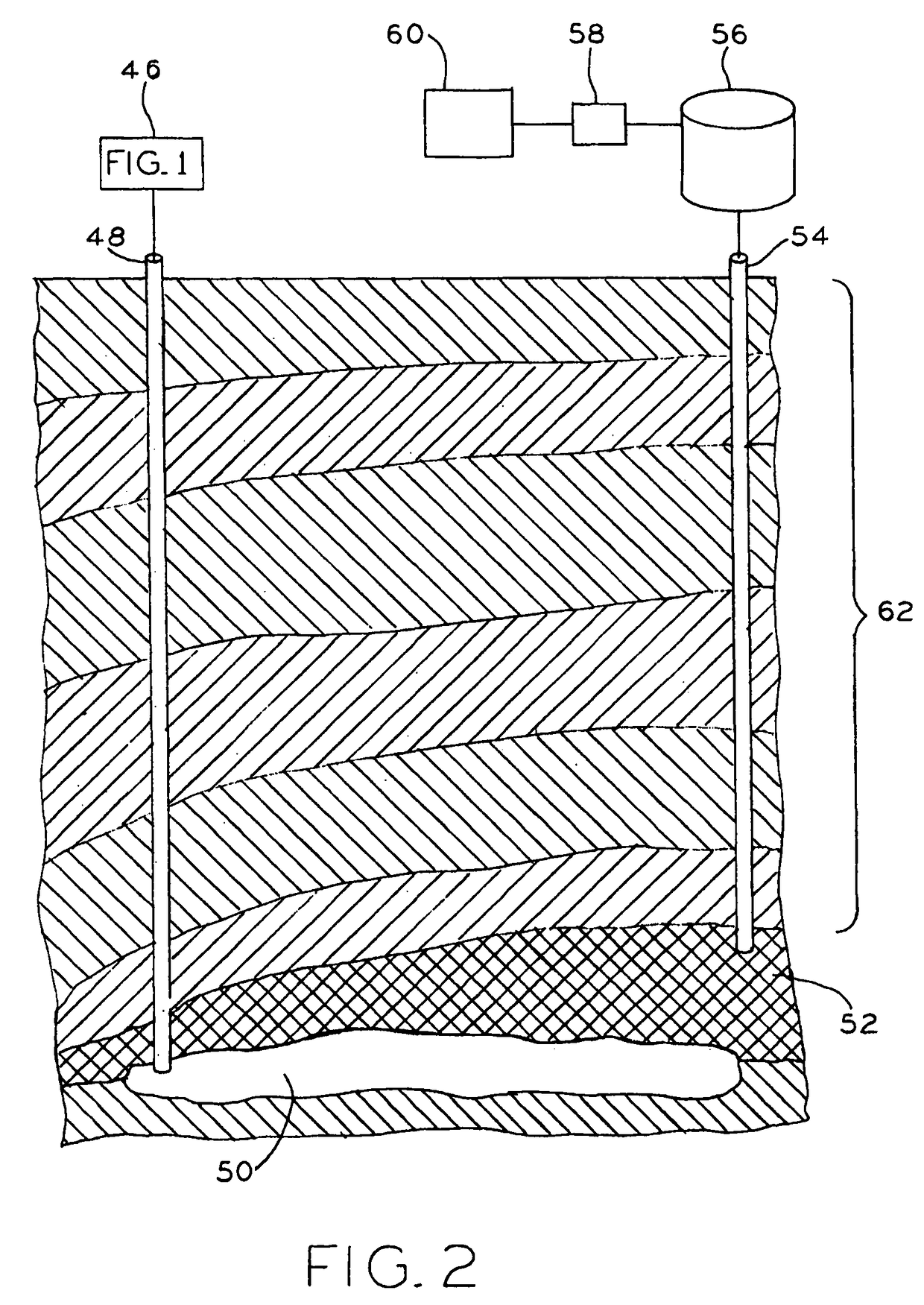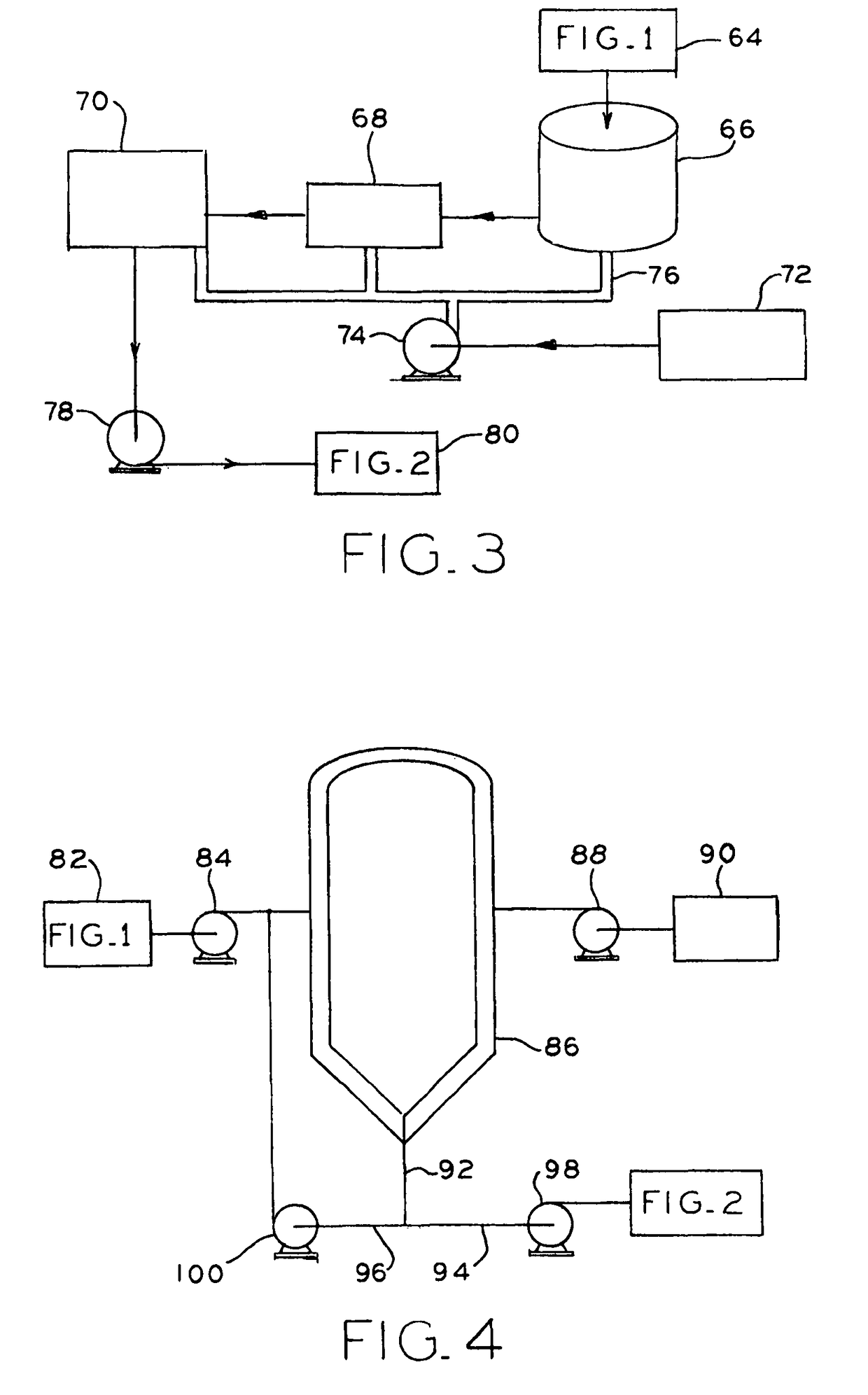Disposal of slurry in underground geologic formations
a geologic formation and underground technology, applied in the direction of biological sludge treatment, transportation and packaging, borehole/well accessories, etc., can solve the problems of large amount of fuel, high negative heat value, and serious disposal problem of sewage and wastewater treatment plant sludg
- Summary
- Abstract
- Description
- Claims
- Application Information
AI Technical Summary
Benefits of technology
Problems solved by technology
Method used
Image
Examples
example 1
[0055]Sewage sludge was subjected to slurry treatment as described in the current invention. The following table indicates viscosity of the resulting slurry at 177° F. and at variable shear rates:
[0056]
Shear RateViscosity(sec−1)(cP)1.5310733.066445.1144210.2126551.0781102.1249153.2136170.2333306.4122340.4620510.69151021.389
example 2
[0057]Sewage sludge from a wastewater treatment plant is received in a receiving tank. Sewage sludge is treated in order to adjust the particle size and viscosity by mixing and optionally, addition of water, to produce unreacted slurry. The slurry is then preheated through heat exchangers at a temperature of about 150° C. to 315° C. under pressure of about 400 psi to 1200 psi which is sufficient to keep the water present in the slurry in liquid state.
[0058]Preheated slurry is then held at a temperature of about 150° C. to 315° C. under pressure of about 400 psi to 1200 psi in the reactor, which causes rupturing of biological cells and release of the water trapped in the cells. The slurry is then subjected to a pressure let-down which causes carbon dioxide to released from the slurry as a gas. The carbon dioxide is collected.
[0059]The slurry is cooled to a temperature of about 35-60° C. and is inoculated with the microbial inoculum. Upon mixing with the microbial inoculum, the slurry...
example 3
[0061]Sewage sludge was subjected to slurry treatment as described herein. The following table shows the distribution of the particle size in the resulting slurry:
[0062]
SlurryPercent ofparticle sizeslurry under the(micrometers)particle size149967483537644712537682560205515491040522310
PUM
 Login to View More
Login to View More Abstract
Description
Claims
Application Information
 Login to View More
Login to View More - R&D
- Intellectual Property
- Life Sciences
- Materials
- Tech Scout
- Unparalleled Data Quality
- Higher Quality Content
- 60% Fewer Hallucinations
Browse by: Latest US Patents, China's latest patents, Technical Efficacy Thesaurus, Application Domain, Technology Topic, Popular Technical Reports.
© 2025 PatSnap. All rights reserved.Legal|Privacy policy|Modern Slavery Act Transparency Statement|Sitemap|About US| Contact US: help@patsnap.com



